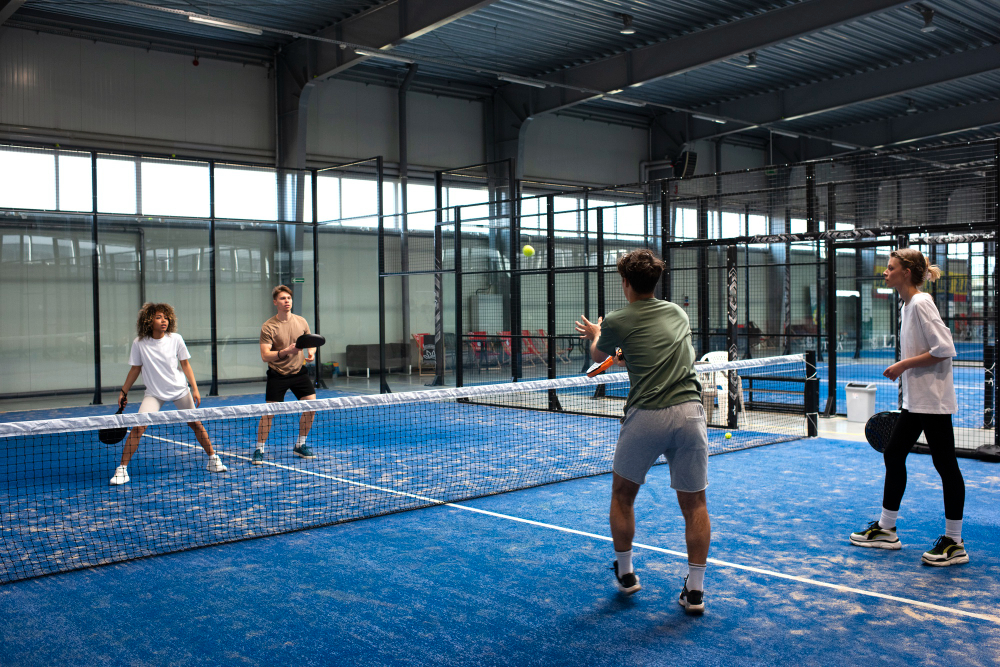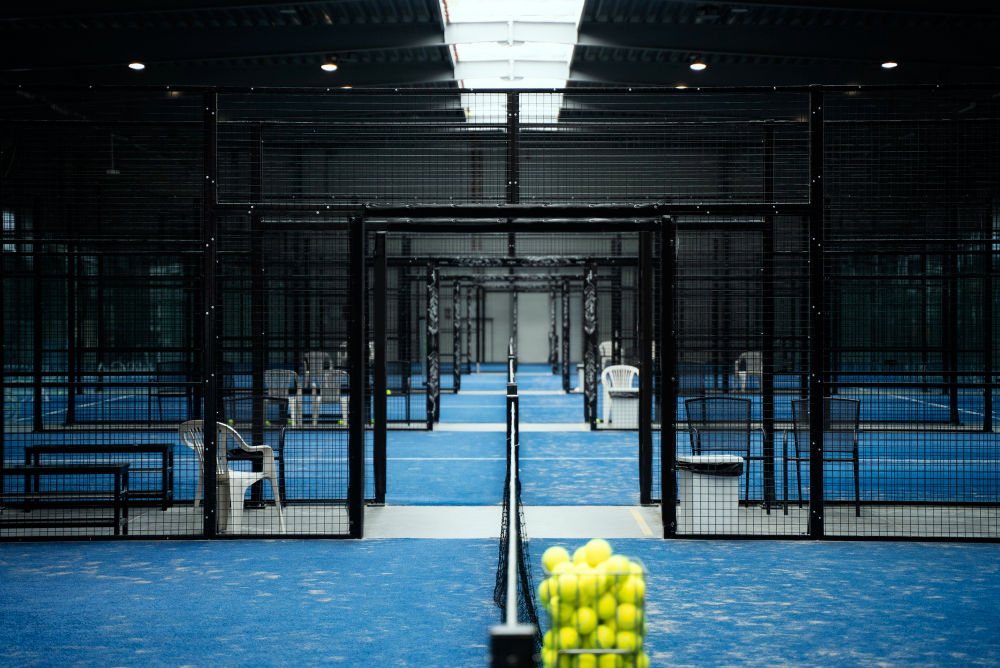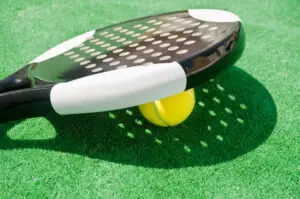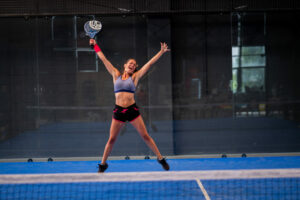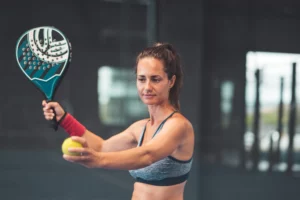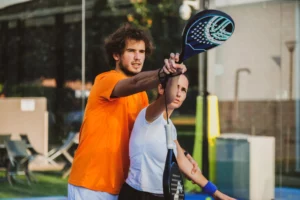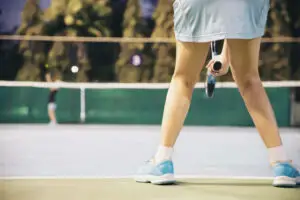Are you passionate about the latest sports sensation, padel? Often likened to a fusion of tennis and squash, this sport offers excitement. Although relatively new in the United States, professionally designed padel courts can provide an exhilarating experience for players and spectators alike.
Before embarking on the construction journey, it’s crucial to grasp the expenses and design considerations associated with creating your padel court.
This comprehensive guide delves into construction costs, surface materials, and court layouts.
What’s the price tag for building a padel court in the USA?
On average, you can anticipate costs ranging from $24,000 to $65,000, influenced by material quality, competition standards, and location.
When planning the construction of your padel court, it’s essential to have a clear breakdown of the associated costs. Here’s a detailed breakdown of key expenses:
Understanding Padel Court Construction Costs
| Expense | Price Range |
| Steel and Glass Construction of the Padel Court | $16,500 – $33,300 |
| Padel Court Surface: Artificial Turf | $3,600 – $11,500 |
| LED Floodlight System | $1,800 – $8,000 |
| Additional Equipment (e.g., sliding doors, scoreboard, netting) | $1,600 – $8,200 |
| Padel Start Kit (includes rackets, balls, etc.) | $1,100 – $2,400 |
| Total Estimated Padel Court Cost | $24,600 – $63,400 |
Factors Influencing Padel Court Construction Costs
Building a padel court involves numerous considerations that can significantly impact the overall cost. Let’s explore these factors to help you effectively plan your construction project.
Athlete Level and Court Usage
The type of players you expect (professionals, amateurs, or casual players) will influence the court’s durability and design. Professional-level courts require higher-quality surfaces to endure intense play.
- Court Dimensions and Size: Official padel courts adhere to a standard size (33 ft x 66 ft), while recreational courts offer more flexibility in dimensions.
- Surface Material: Professional courts typically use artificial turf for better playability, while recreational courts might opt for more economical options like asphalt or cement.
- Wall Construction: Professional courts often feature transparent glass walls, whereas recreational courts may use less expensive materials.
- Lighting Standards: Professional courts need to meet specific lighting standards, unlike recreational courts, where such requirements are less stringent.
- Additional Amenities: Courts designed for professional use may include spectator bleachers, scoreboards, locker rooms, and other facilities.
- Number of Courts and Layout: The total number of courts affects both the cost and the complexity of construction. Additional space for spectators and amenities also needs to be considered.
Court Placement: Indoor vs Outdoor
Choosing between indoor and outdoor courts depends on your preferences and budget. Each has its own set of advantages and challenges:
- Outdoor padel courts require weather-resistant materials and more maintenance.
- Indoor padel courts need proper lighting systems and can utilize a variety of flooring materials.
Working with a professional court installation company is recommended to ensure all aspects of padel court construction are adequately addressed.
Subfloor and Surface Materials for Padel Tennis Courts
Creating a top-quality padel tennis court begins with choosing the right subfloor and surface materials. Padel courts typically rest on either an asphalt or concrete subfloor/base layer.
When it comes to the court surface, artificial turf is the preferred and highly recommended choice. It offers a safe and sustainable playing surface perfectly suited for padel. By selecting the right combination of shock-absorbing padding, turf fibers, and binding agents, you can ensure a comfortable playing experience that minimizes foot fatigue and reduces the risk of injuries.
Other materials for padel court flooring include concrete, asphalt, clay, rubber, synthetic materials, and modular tiles. Keep in mind that your location can influence project costs, impacting factors such as material sourcing, taxes, and labor expenses.
Steps for Planning the Construction of a Padel Court
To create a modern sports facility, consider adding extra amenities like bleachers, lighting, sound, scoreboards, and more. These additions elevate the overall experience for athletes and spectators.
Don’t overlook sport-specific features like fencing or back and side walls, which are crucial for keeping balls within the playing area, ensuring safety.
- Cost Estimate: Begin your planning by obtaining a cost estimate for the entire construction project. This early assessment will help you secure funding and gain support from various stakeholders.
- Funding: Explore grant and funding opportunities for sports and recreational facility development, including padel courts. Public and private entities often offer grants for such projects.
- Location Selection: Finding the right location for your padel court complex involves considering physical requirements and assessing feasibility and profitability. Ensure that the chosen site meets both practical and business criteria.
- Construction: When all aspects are in place, it’s time to start construction. Building a padel court requires specialized knowledge, equipment, and technical expertise. Choose a reputable Padel Court construction company based on factors beyond cost, and obtain quotes from multiple providers to make an informed decision.
As an experienced padel coach and enthusiast, I hope this guidance helps you embark on a successful padel court construction journey. If you have any questions or need further assistance, feel free to reach out for expert advice and support. Good luck with your project!
Designing Indoor and Outdoor Padel Courts: Key Considerations
While indoor and outdoor padel courts may appear similar at first glance, there are crucial design considerations to bear in mind.
- Weather Implications: Your local climate plays a pivotal role in material selection. Outdoor courts are exposed to year-round elements, requiring durable materials capable of withstanding extreme heat, cold, or moisture.
- Roof Height: If you’re constructing an indoor padel court within an existing facility, ensure the roof clearance is at least 7 meters above the playing surface. Due to the sport’s fast-paced nature, sufficient vertical space is essential for an optimal padel experience.
- Lighting Solutions: Lighting is critical for both indoor and outdoor padel tennis courts. Outdoor courts demand weather-resistant lighting systems that provide adequate brightness without causing eyestrain. Consider energy-efficient LED lighting for long-term cost savings.
Common Pitfalls to Avoid in Padel Court Design
While working with professional padel court installers helps prevent mistakes, be aware of common pitfalls:
- Neglecting Early Cost Planning: Inadequate budgeting can halt construction progress. Thorough financial planning is essential.
- Ignoring IPF Standards: Ensure your court adheres to International Padel Federation (IPF) standards to provide sufficient space for players.
- Choosing Unsafe Materials: Opt for materials that prioritize player safety to minimize the risk of injuries.
- Underestimating Lighting: Proper lighting is crucial for visibility and safety during matches.
- Court Orientation: Collaborate with professionals who understand court logistics to avoid poorly designed padel courts.
Cost-Effective Padel Court Construction Tips
To manage padel court construction costs effectively:
- Partner with Local Experts: Collaborate with a local company experienced in padel court construction. They can navigate local building codes and recommend cost-saving materials and processes without compromising quality.
- Avoid Unnecessary Additions: Prioritize elements essential for the game’s enjoyment and safety while avoiding unnecessary extras.
By following these guidelines, you can create exceptional padel courts within your budget and ensure an enjoyable experience for players.
Frequently Asked Questions
How profitable is a padel court?
Profitability varies based on location, demand, and management.
How much does it cost to build a padel court?
Total Estimated Padel Court Cost $24,600 – $63,400
Can I build my own padel court?
Yes, but it requires technical knowledge and the right materials.
How long does it take to build a padel court?
Usually a few weeks, depending on the complexity and resources.
How much space do I need for a padel court?
The minimum is about 2,153 sq ft (33 ft x 66 ft), plus extra for amenities and the surrounding area.
Do you need planning permission for Padel courts?
Often required, especially for outdoor courts, local regulations should be checked.
How Long Does It Take to Build a Padel Court?
Typically, it takes a few weeks, depending on the complexity and resources involved.

